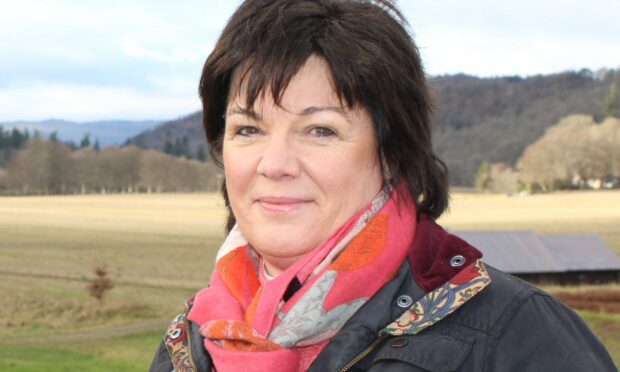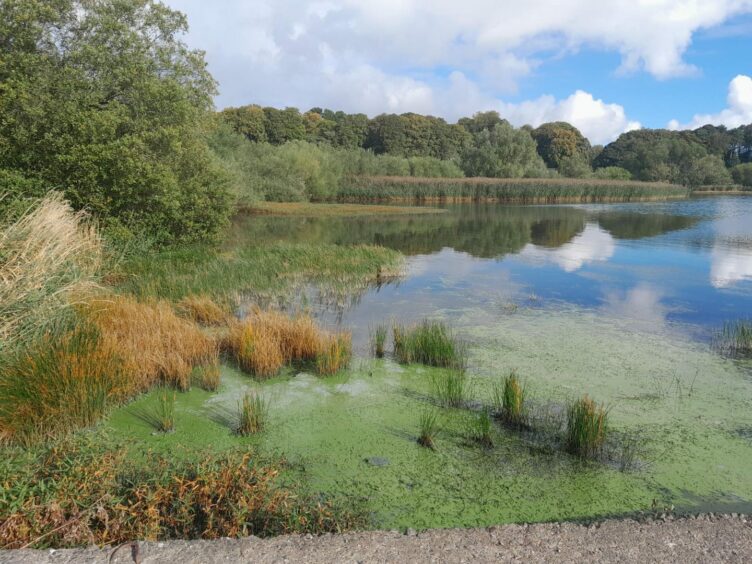Staff at Scotland’s environment watchdog are visiting farms around Loch Leven in a bid to stop dangerous pollution from entering the loch.
But are farmers really to blame for poor water quality at the beauty spot, where problems with toxic algae appear to be worse than ever before?
The answer is no, according to Liberal Democrat councillor Claire McLaren.
She has accused Sepa staff of “passing the buck” onto the farming industry. She challenged experts at the regulator to show more evidence linking agriculture to the problem.
Claire argued Sepa’s position “that the main source of phosphorus present in Loch Leven is due to agricultural practices is questionable”.
“There is an inference of mismanagement and it is not substantiated by any current scientific evidence.
“It’s an easy answer for them to give.”
Claire, who is her party’s agricultural spokesperson, doubts fertiliser “run-off” from nearby farms is to blame for the levels of phosphorus at Loch Leven.
High levels of the chemical phosphorus in the water can in turn lead to poisonous “algal blooms.”
Kinross farmers would not ‘trash’ their own ‘office’
“We all sit at desks and computers. But their office is the rural environment,” Claire continued.
“Farmers are not going to trash their own work environment.”
Agriculture is an industry close to Claire’s heart.
“My father was a dairy farmer in Perthshire. My son is a farmer and many members of my family are farmers.”
Claire appealed to Sepa to “give the data” linking phosphorous levels to agriculture.
“It is an industry that gets poor press at times.
“But [those in] the agricultural industry are problem solvers. If they find a problem, they will do their best to solve it.”
A spokesperson from NFU Scotland said farmers have strict rules regarding fertiliser use.
“Farmers and land managers have strict rules to adhere to regarding the application of slurries and manures to land,” she said.
Farmers remained “committed” to following the regulations, meaning the risk of pollution “is low”, she added.
Loch Leven is in the Strathmore, Fife and Angus Nitrate Vulnerable Zone. In zones such as this, farmers must follow rules to limit the nitrate flowing from farmland and causing water pollution.
Sepa ‘working with farmers’ to keep Loch Leven pollution under control
A Sepa spokeswoman pointed towards a study published in 2017 that showed “a high proportion of the nutrients entering Loch Leven are from diffuse sources within the catchment”.
Diffuse pollution includes chemicals mixed with rain water that then ‘runs off’ farmland and into burns and rivers.
She said officials are working with landowners to ensure they are complying with rules to control pollution.
“Any issues found are highlighted to the land manager responsible and appropriate timescales for remedial action are agreed.
“The feedback from land managers has been very positive and it is hoped these good working relations continue resulting in improved farming practices and water quality improvements.”
Officials could use its powers to force change “if required”, she added.
“Farm visits will continue to take place. Our work with partner agencies to reduce the amount of phosphorus entering Loch Leven from all sources remains ongoing.”


![Lib Dem Councillor Claire McLaren has accused Sepa of "[passing] the buck" regarding Loch Leven pollution. Image: Claire McLaren.](https://wpcluster.dctdigital.com/wp-content/uploads/sites/12/2024/04/SMac_New_Tay_National_Park_Dunkeld-3-36m54jj35-scaled-e1713881368732-620x372.jpg)


![Lib Dem Councillor Claire McLaren has accused Sepa of "[passing] the buck" regarding Loch Leven pollution. Image: Claire McLaren.](https://wpcluster.dctdigital.com/wp-content/uploads/sites/12/2024/03/Sbro_David_Steele_Isle_Of_May_Anstruther-38_56653608-3c87w3jw-scaled-e1710865626565-620x372.jpg)
![Lib Dem Councillor Claire McLaren has accused Sepa of "[passing] the buck" regarding Loch Leven pollution. Image: Claire McLaren.](https://wpcluster.dctdigital.com/wp-content/uploads/sites/12/2024/03/Fnix_Leslie-Martin-at-Camperdown_08-03-24-3ewqvnosz-scaled-e1710348835415-620x372.jpeg)
![Lib Dem Councillor Claire McLaren has accused Sepa of "[passing] the buck" regarding Loch Leven pollution. Image: Claire McLaren.](https://wpcluster.dctdigital.com/wp-content/uploads/sites/12/2023/09/MicrosoftTeams-image-93-2eo27cykc-e1705593315149-620x372.jpg)


![Lib Dem Councillor Claire McLaren has accused Sepa of "[passing] the buck" regarding Loch Leven pollution. Image: Claire McLaren.](https://wpcluster.dctdigital.com/wp-content/uploads/sites/12/2024/02/Fnix_Fife-Bloodhounds-in-Renfrewshire14_25-2-24-3eiypnjuq-scaled-e1709046212625-620x372.jpeg)
![Lib Dem Councillor Claire McLaren has accused Sepa of "[passing] the buck" regarding Loch Leven pollution. Image: Claire McLaren.](https://wpcluster.dctdigital.com/wp-content/uploads/sites/12/2024/02/KCes_Fishing_Season_River_Eden_Dairsie_15.02.24-19-37rhgxf5z-scaled-e1708354810841-620x372.jpg)
Conversation